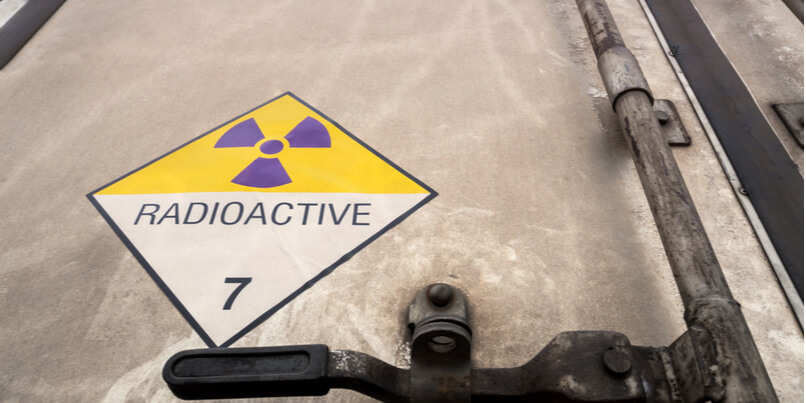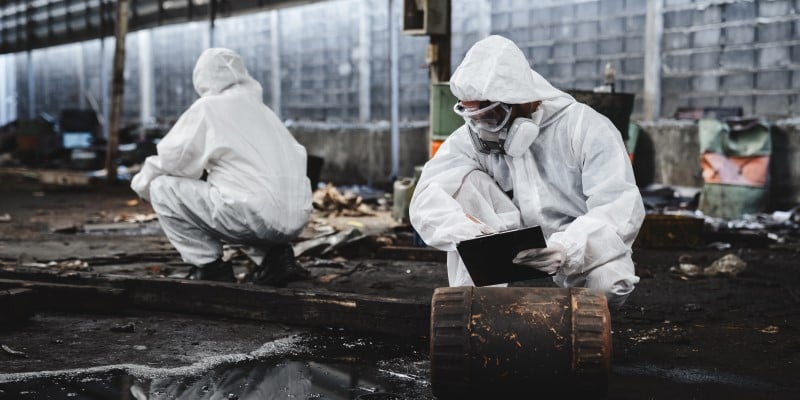 Radioactive materials have a wide variety of applications within the fields of medicine, power generation, manufacturing and the military - and just as with any other product, there are times when these materials may need to be moved from one location to another.
Radioactive materials have a wide variety of applications within the fields of medicine, power generation, manufacturing and the military - and just as with any other product, there are times when these materials may need to be moved from one location to another.
In the US, the Environmental Protection Agency (EPA) estimates that there are around three million shipments of radioactive materials to, from or within the US every year.In the UK meanwhile, Public Health England (PHE) has reported that somewhere in the region of half a million packages containing radioactive materials are transported to, from or within the UK annually.
Regulation of transport of radioactive materials
Ensuring the safety and security of the transport of radioactive material - whether be it by road, rail, air or sea - is understandably a major priority and one that is highly regulated, depending upon the type, and the quantity, of radioactivity that is being transported.
Materials that are deemed to be low in radioactivity may be able to be shipped with no, or very few, controls.
Materials that are considered to be highly radioactive will be subject to controlled routes, segregation, additional security and specialist packaging and labelling measures.
The UK's Office for Nuclear Regulation (ONR) has a primary role to play in advising on the safe and secure transportation of radioactive substances across a wide of sectors - from the movement of decommissioned nuclear reactors or the carriage of irradiated nuclear fuel to the shipping of medical radio-pharmaceuticals, or the transport of sealed radioactive sources used within the construction or oil industries.
What constitutes a radiation transport event?
The normal transport of radioactive materials can result in transport workers (and sometimes even members of the public) being exposed to small radiation doses.
The strict regulatory conditions of transport however are designed to minimise these exposures.
Accidents and incidents can occur for a variety of reasons - from seemingly minor administrative errors, to problems arising from insufficient packaging, mishaps that occur during loading or unloading of consignments or the theft or loss of a radioactive material being carried.
When such events do occur there is the risk of radiological consequences not just for those transport workers in the immediate vicinity but for emergency responders, HazMat personnel and the wider public.
According to the Radioactive Materials Transport Event Database (RAMTED) there were a total of 16 accidents or incidents involving the transport of radiological materials in the UK in 2012.
These included the receipt of a flask from a nuclear power station where one of the lid-chock locking bolts was found to be loose; the failure of lifting equipment when removing a type 30B uranium hexafluoride cylinder from its protective shipping packaging; and an incident involving the stealing of pipes and plates from a scrap meal facility that were found to have traces of orphan radioactive sources.
Public Health England differentiates radiation transport events into one of the five following categories:
- A transport accident (TA) - which is defined as any event that occurs during the carriage of a consignment of radioactive material and that prevents either the consignment, or the vehicle itself, from being able to complete its journey.
- A transport incident (TI) - comprising any form of event, other than an accident, that may have occurred prior to or during the carriage of the consignment and that may have resulted in the loss or damage of the consignment or the unforeseen exposure of transport workers or members of the public.
- A handling accident (HA) - encompassing any accident that occurs during the loading, shipping, storing or unloading of a consignment of radioactive material and that results in damage to the consignment.
- A handling incident (HI) - defined as any handling event, other than an accident, that may occur during the loading, shipping , storing or unloading of the radioactive consignment.
- Contamination (C) - defined an an event where radioactive contamination is found on the surface of a package or where the conveyance of a radioactive material is found to be in excess of the regulatory limit.
The role of radiation safety training
When formulating a radiation training strategy, it is vital that personnel are adequately trained to handle the hazards and the risks associated with incidents involving radioactive materials.
Radiation safety training and development programmes should ideally provide personnel with both the knowledge they need and the practical skills that they will rely on in order to carry out their duties safely and effectively.
While most radiation detection equipment is relatively easy to use, the key lies in ensuring that trainees understand the significance of the readings that they get, that they can recognise the implications of changes in units of measurement and that they have the opportunity to train in as life-like a setting as possible.
If you would like to explore how the addition of simulator detector equipment can assist you in enhancing your radiation safety training then please download our free eBook below for further detail.







